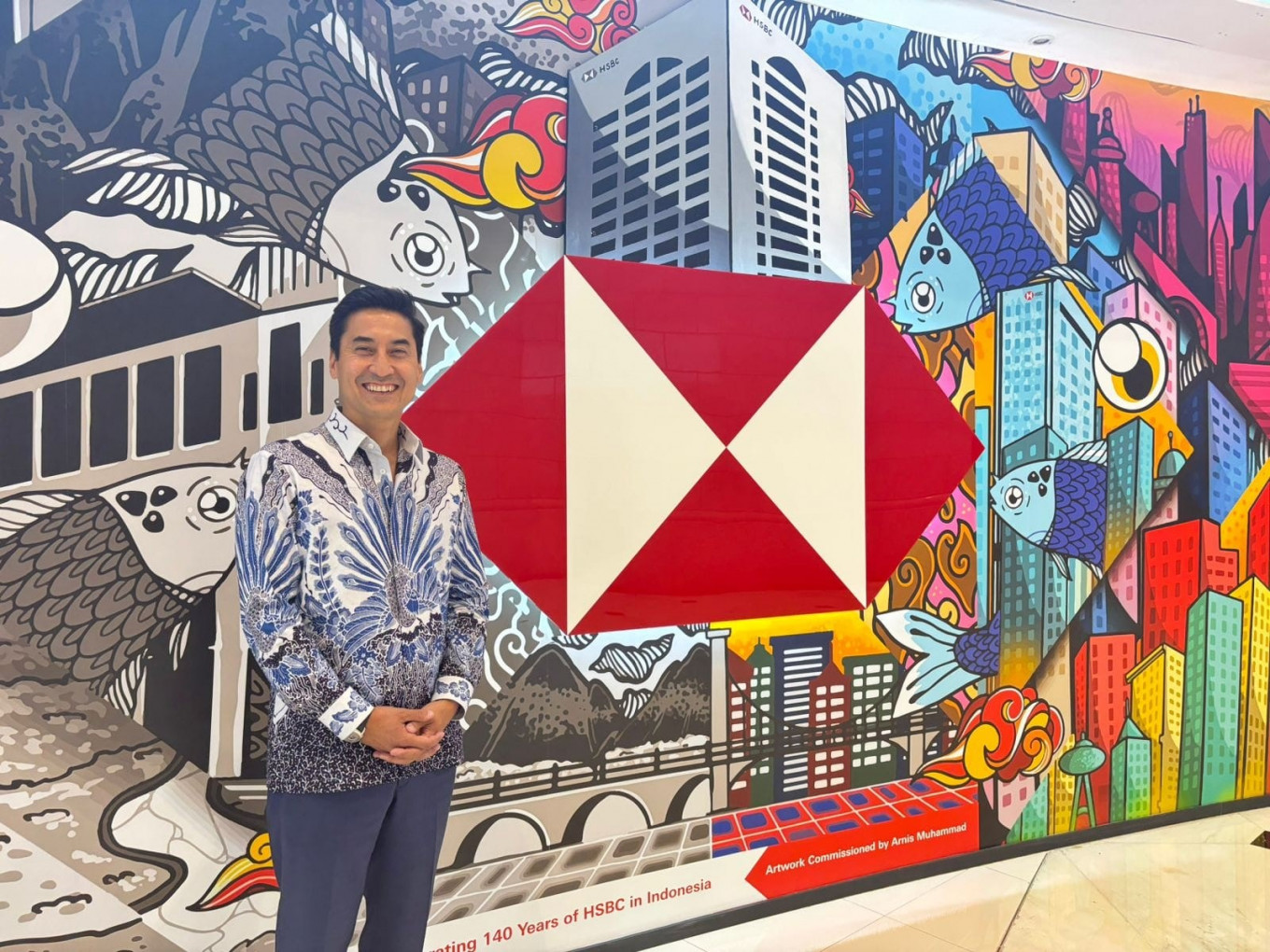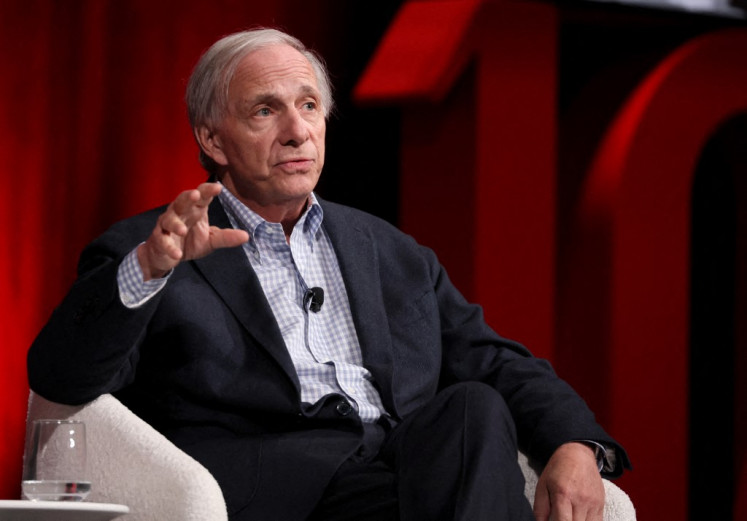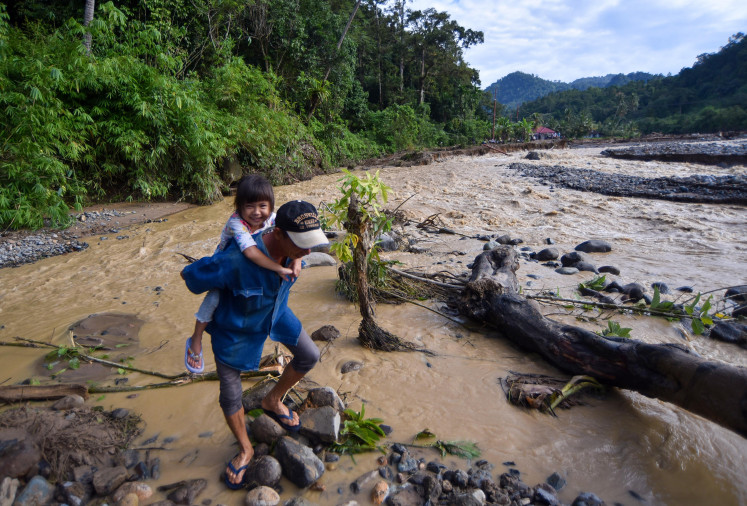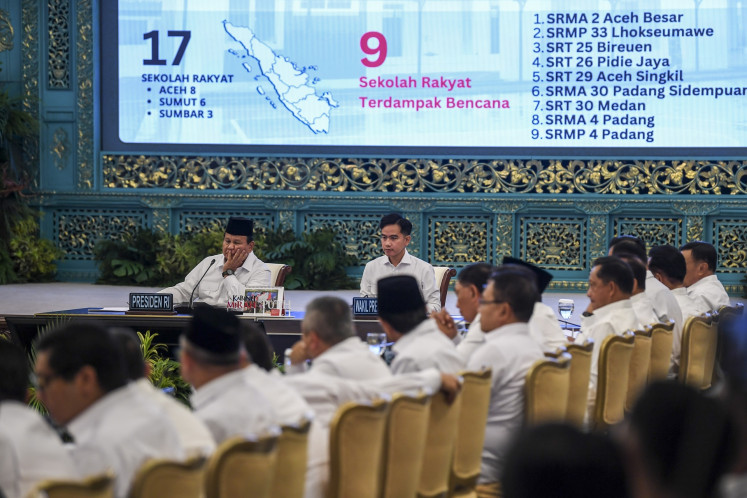Popular Reads
Top Results
Can't find what you're looking for?
View all search resultsPopular Reads
Top Results
Can't find what you're looking for?
View all search resultsJo Miyake: HSBC's global support for growth via the new economy and foreign investment
Change text size
Gift Premium Articles
to Anyone
T
he World Economic Forum estimates that more than two-thirds of new value creation over the next decade could come from digitally enabled platforms, and the digital economy will reach $16.5 trillion and capture 17% of global GDP by 2028 for 14 countries across North America, Europe, APAC, and Latin America.
Sitting at the heart of this trajectory of growth is Asia. The region has become the world’s leading innovation powerhouse, and digital economy companies continue to be a key growth driver for Southeast Asia’s economy, with the sector forecast to reach US$600 billion by 2030.
Start-ups in the region, however, have had a rough time of late. Ensuring the current downturn in the economic cycle doesn’t hobble the next phase of regional growth will require reimagining how startups are funded.
We talked to Jo Miyake, HSBC General Manager, Chief Commercial Officer for the Global Commercial Banking business on his insights into the digital economy in Indonesia, ASEAN, and beyond as well as HSBC’s commitment - in supporting the growth of the new economy.
“In my view, Indonesia offers very interesting opportunities for investors,” Miyake kick-started his remarks at the New Economy Roundtable Dinner during his recent visit to Jakarta.
Miyake also gave his insights into huge opportunities that ASEAN, including Indonesia, offer to investors and how the region remained highly attractive to foreign direct investment (FDI), critical for the emerging countries which need multinational funding and expertise to expand.
“It (Indonesia) is the largest economy in ASEAN with a plethora of natural resources, such as its vast nickel reserves. This positions the country as a key market for regional trade and investment,” he added.
Miyake further highlighted the economic opportunities that Indonesia offered, particularly with respect to the digital economy, which he has a particular interest in.
“Indonesia also has a vibrant digital economy. It is expected that Indonesia’s digital economy will reach US$ 360 billion by 2030, which is more than half of Southeast Asia’s. That’s why Indonesia has been one of the top 15 global destinations for VC (venture capital),” he added.
“Indonesia’s digital economy is still at a nascent stage but we can see that there’s ambition to drive Indonesia’s new economy,” he noted.
This sector is expected to contribute 20 percent of Indonesia GDP by 2045. A critical sector to support Indonesia’s grand ambition to enter the Top 5 world’s largest economy, he added.
Furthermore, Indonesia, being the largest economy in ASEAN, really has the potential to be the epicentrum of growth for digital economy in the region.
Focusing on developing a market-leading sales force at HSBC, Miyake is also overseeing HSBC’s International Banking business, alongside the HSBC Innovation Banking proposition, launched in 2023.
Understanding the new economy in the context of ASEAN, he pointed out, “ASEAN presents rich and diverse growth opportunities in the new economy space.”
Miyake observed how technology companies globally were facing tough times as central banks leapt to cool inflation spikes with higher interest rates, leading to an era of ultra-low borrowing costs coming to an abrupt halt.
“It has become harder and more expensive to roll over debt and appetite for startup equity has abated,” he said.
This is particularly tough on pre-profit technology companies. Data aggregated by the Asia Venture Capital Journal shows a precipitous decline. In 2021 early- and growth-stage tech companies raised nearly $120 billion. Two years later this was roughly $30 billion
“Globally we always support the new economy, and in ASEAN we support the growth of the new economy sector through the ASEAN Growth Fund that we launched this year,” he added.
The new US$1 billion ASEAN Growth Fund (“Fund”), a first of its kind, aims to support more digital economy businesses in the region as they scale their asset portfolios to expand across and beyond the region to the next stage of growth.
This Growth Fund focuses on companies that are scaling up through digital platforms across Southeast Asia. “This lending platform allows us to better support new-economy companies in the region including Indonesia, whether start-ups or scale-ups, as they expand across the region and advance along the corporate lifecycle,” Miyake said.
Miyake cited AwanTunai, an Indonesian fintech company, which has taken advantage of the Growth Fund. HSBC extended Rp 300 billion social loan to the fintech company to support their program to enhance micro-small-and-medium enterprises (MSME) ecosystem for financial inclusion.
“The loan proceeds will be used specifically to finance its MSMEs borrowers to procure inventories, and therefore open financial access to the un-bankable segment,” he said.
“We hope that following the launch of this new fund, we can support more companies, particularly new economy businesses to scale in Indonesia and across ASEAN,” he added.
Beyond financing, Jo reiterated that strategic partnership and collaboration are key to support the growth of the new economy sector. One example that he highlighted was the collaboration agreement with Antler that positioned HSBC to be the preferred banking partner to Antler’s Singapore portfolios of companies.
“We are working closely with these founders and portfolio companies, bringing thought leadership, growth advisory and support with banking products. In the early days, this may be as simple as transactional accounts, and cross-border banking. We know founders want the basics to work well, and they want a bank who understands them. As these companies scale though, our ambition is to grow with them…supporting them from Day-0, all the way to becoming the unicorns and household names of tomorrow,” he elaborated.
Dedicated partner to grow internationally
International expansion is becoming increasingly common for companies in today’s globalized era, but it should be acknowledged that they face inevitable challenges, which unless finding the right partner, they might fail to achieve the ambition. Miyake has the key to the issue as HSBC offers tailored solutions.
While ensuring that the fundamental aim of HSBC International Banking is to support customers with their international ambitions, Miyake said “HSBC’s international network is one of our key strengths, with operations in 60 markets and access to 90 percent of global trade flows,” he explained.
“Each business will have their own international goals, and HSBC is well-positioned to support them. International operations (and expansion) are complex, with some key challenges including navigating different regulatory systems, extended supply chains, and operational logistics,” he noted.
Miyake said that the #ConfidentlyInternational campaign rolled out last year was all about “empowering our customers to achieve their international ambitions and supporting them as they navigate the aforementioned complexities.”
“HSBC can act as a dedicated partner, delivering a consistent international banking experience, with tailored solutions for businesses and their respective needs – from our extensive knowledge of the markets in which we operate, to helping businesses navigate cultural nuances,” he pointed out.
Being highly committed to supporting HSBC clients’ international expansion efforts, HSBC has also launched the HSBC Business Guide to ASEAN and beyond, which Miyake, said “aimed to be a resource for companies to gain in-depth analysis of local market dynamics, trends and strategic insights to tap opportunities across ASEAN, Middle East, India and China.”
“The HSBC Business Guide draws on our product capability, in-market expertise across the region, and global connectivity and is a symbol of our commitment to being the international bank of choice for businesses in ASEAN and Beyond,” he said.
Miyake revealed how the thriving ASEAN and Indonesia were one of the world’s top Foreign Direct Investment (FDI) destinations.
“At HSBC, we are very excited to be ASEAN’s leading international bank. ASEAN is such an important region, and it is indeed one of the fastest-growing regions in the world, growing 5.7 percent in 2022 and maintaining an average growth rate of 4.4 percent,” he said.
“In 2022, it received over US $224.2 billion in FDI and this figure will continue to grow. Today, it is home to about 678 million people and it is one of the world’s most digitally connected and fastest growing internet markets in the world.”
Other phenomenal data points that point to the rich opportunities within ASEAN – it is the 5th largest economy in the world and the fourth-largest exporter in the world.
“The region is on track to be the 4th largest economy by 2030. Young demographics with median age of 30 years, growing consumptions, increased urbanization rate, investment boom, competitive supply chain, and rapid technology development (and adoption) are some of the key growth drivers for ASEAN,” he pointed out.
“Companies around the world are looking to expand into ASEAN, now, more than ever. The ten-member trade bloc boasts fast economic and trade growth, alongside a thriving digital economy and diversity across member states,” he said.
“Within ASEAN markets, the free trade agreements provide favourable conditions that are attractive to many businesses,” he noted.
“As the largest ASEAN member by population, Indonesia presents ample opportunities. This is further enhanced by the various reforms implemented to make it easier to start a business, including the enactment of Omnibus Law on Job Creation which has been instrumental in driving Indonesia’s FDI momentum. Of course, there is always more that can be done but this is great to see,” he said.
“As for China + 1 diversification, we are still seeing this trend as relevant and a region like ASEAN will continue benefiting from a FDI and trade perspective. This is not only US and European global companies that look to diversify their concentration risk but also the Chinese companies themselves. As such, we also see major FDI flows from China to ASEAN – similar to FDI from China to Indonesia”.
“In Indonesia, for instance, we continue observing increased FDI flow from China mainly in the metal and processed metal industries, Battery EV and EV, as well as the general manufacturing sector. The success in capturing opportunities on supply chain diversification is also contributed by investor-friendly government policies,” he noted.
HSBC recently celebrated 140 years in Indonesia and has evolved into the leading international bank in the market. “With such a long and established presence in Indonesia, local knowledge, combined with our banking capabilities and global expertise, ensures HSBC is well-positioned to support the ambitions of our international clients alongside those of Indonesia,” said Miyake.
When asked one word to best describe Indonesia, he quickly responded with two words instead: Opportunity and Ambition. “Clearly Indonesia has a vast opportunity for the digital economy to have trajectory growth, and at the same time, the Government of Indonesia has a big ambition to support this growth and make Indonesia the growth center of digital economy in the region.”
Concluding the interview and on a lighter note, Miyake shared how he keeps in shape despite busy business travels.
“Whenever I travel, I always allocate some time to enjoy the local cuisine. I love food. So, my love for running is my way of compensating for my love for food. In my short visit to Jakarta this time, I managed to try some Padang food and Kopi Luwak, which I think is the best way to learn about the culture,” he said.
Source: HSBC












